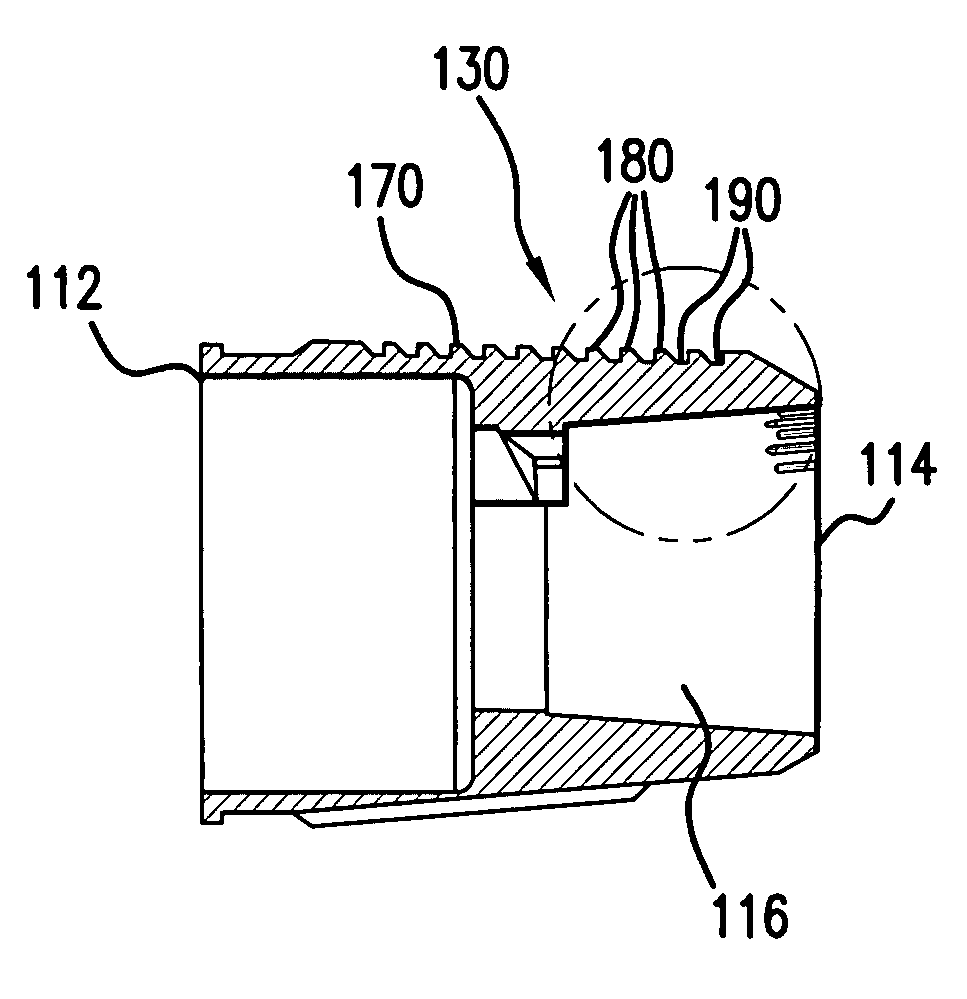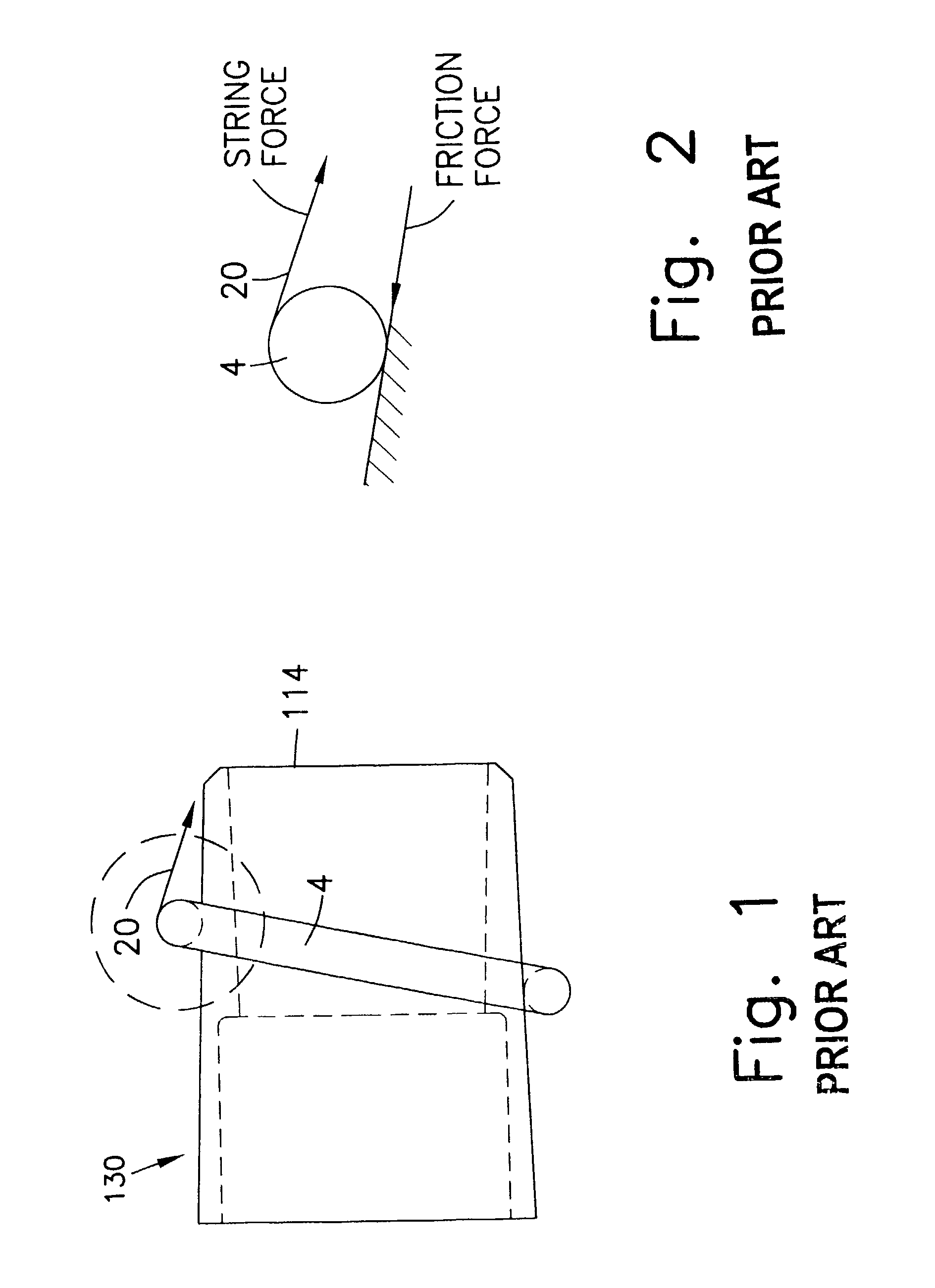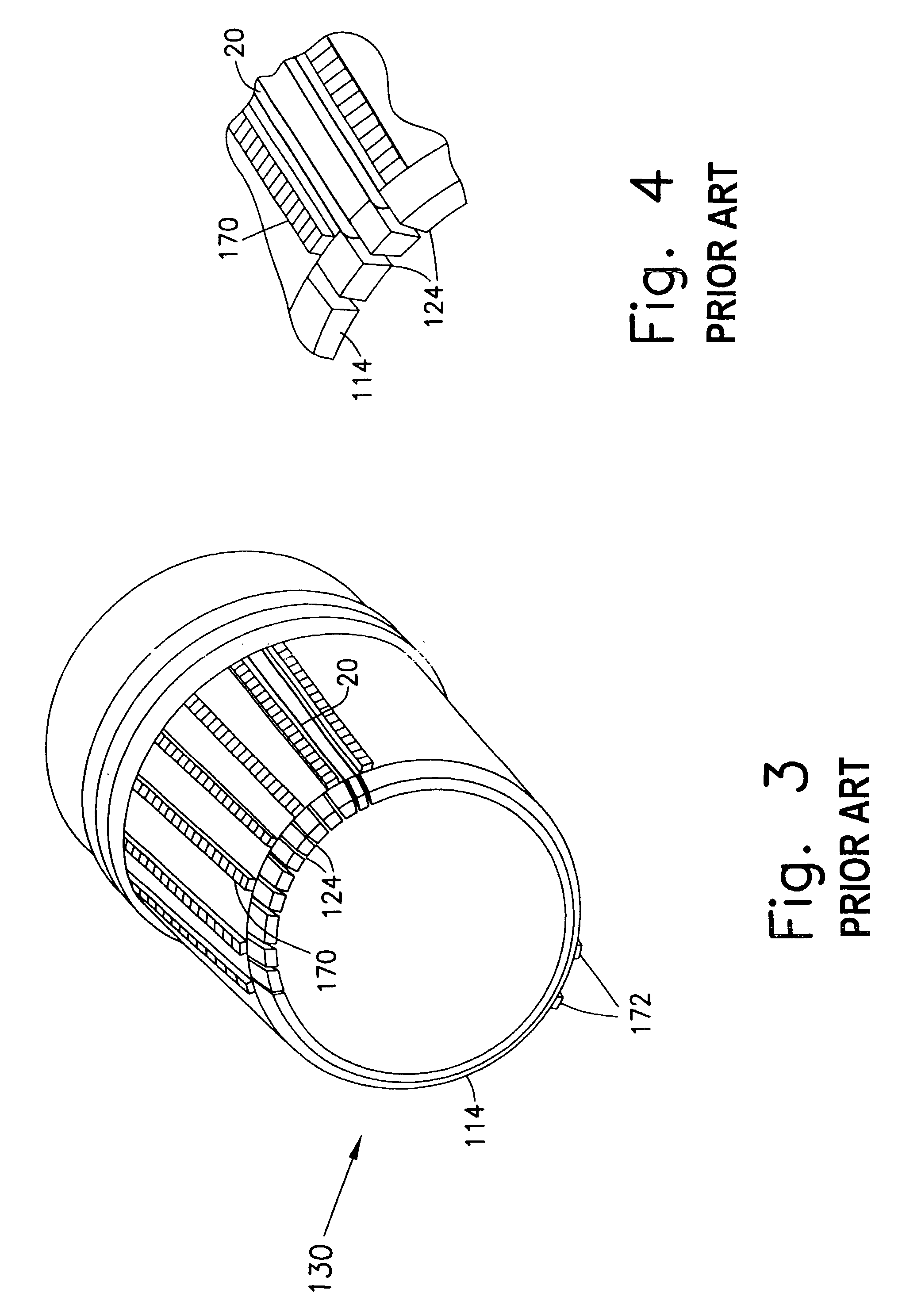Ligating band dispenser with transverse ridge profile
a technology of transverse ridge and dispenser, which is applied in the field of tissue ligation, can solve the problems of excessive room in the endoscope working channel, preventing the use of catheter-type accessory devices, and affecting the ligation effect of the band, so as to promote the rolling of the band instead of sliding, and improve the transverse groove or ridge profile
- Summary
- Abstract
- Description
- Claims
- Application Information
AI Technical Summary
Benefits of technology
Problems solved by technology
Method used
Image
Examples
Embodiment Construction
[0023]FIGS. 1 and 2 illustrate the forces involved in the deployment of a ligating band 4, FIG. 2 being an expanded view of the highlighted portion of FIG. 1. In any design in which the bands 4 are pulled towards the distal end 114 of a support surface 130, reliable band deployment is facilitated by the bands rolling rather than sliding across the support surface 130. The rolling action is caused, for example, by the trigger line 20 pulling over the top of the band 4 and by friction between the band 4 and the support surface 130. Rolling is initiated, for example, at the point in which the trigger line 20 contacts the band 4, and propagates around the band circumference. This rolling causes the band 4 to move distally.
[0024]Potential problems are created when the band 4 slides instead of rolls. If the band 4 slides across the support surface 130, that portion of the band 4 at the trigger line 20 may reach the distal rim of the support surface, thereby allowing the trigger line 20 to...
PUM
 Login to View More
Login to View More Abstract
Description
Claims
Application Information
 Login to View More
Login to View More - R&D
- Intellectual Property
- Life Sciences
- Materials
- Tech Scout
- Unparalleled Data Quality
- Higher Quality Content
- 60% Fewer Hallucinations
Browse by: Latest US Patents, China's latest patents, Technical Efficacy Thesaurus, Application Domain, Technology Topic, Popular Technical Reports.
© 2025 PatSnap. All rights reserved.Legal|Privacy policy|Modern Slavery Act Transparency Statement|Sitemap|About US| Contact US: help@patsnap.com



